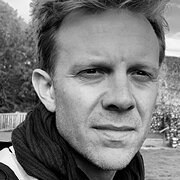Nicholas Schmidle
Author of To Live or to Perish Forever: Two Tumultuous Years in Pakistan
About the Author
Image credit: photo by Rikki Schmidle
Works by Nicholas Schmidle
Tagged
Common Knowledge
- Gender
- male
- Places of residence
- London, Middlesex, England, UK
- Occupations
- journalist
professor - Organizations
- Princeton University
- Agent
- Wylie Agency
- Short biography
- [from Macmillan Publishers website]
Nicholas Schmidle writes for the New Yorker and is the author of To Live or to Perish Forever: Two Tumultuous Years in Pakistan. His work has also appeared in the New York Times Magazine, the Atlantic, Slate, the Washington Post, and many others. Schmidle has been a National Magazine Award finalist, a two-time Livingston Award finalist, and winner of a Kurt Schork Award. He is a former fellow at the Institute of Current World Affairs, the New America Foundation, and the Woodrow Wilson International Center for Scholars and a former resident at the Rockefeller Foundation's Bellagio Center. In 2017, Schmidle was a Ferris Professor of Journalism at Princeton University. He currently lives in London with his family.
Members
Reviews
Statistics
- Works
- 3
- Members
- 111
- Popularity
- #175,484
- Rating
- 4.0
- Reviews
- 18
- ISBNs
- 12




There is a stereotype surrounding reporters. Everyone knows reporters are brazen. Reporters are hungry to scoop the competition. Reporters will stop at nothing to get a good story. Schmidle alludes to this when describing interviews with outlawed Islamic militant groups or his relationship with pro-Taliban leaders. Schmidle implies this when he writes about Daniel Pearl, a reporter murdered just four year prior to Schmidle's own story. He hints of it when he is allowed back into Pakistan just eight short months after his exile from the country.
I cannot imagine why anyone would want to put themselves willingly in an area dangerous enough to require a guard; especially an Islamabad town where you know the phones are being tapped and people are being kidnapped and murdered almost every single day. The idea that if you do not like you current political leader, you can just oust him by taking to the streets in violent protest. Schmidle's courage to tell a terroristic story is to be commended.… (more)